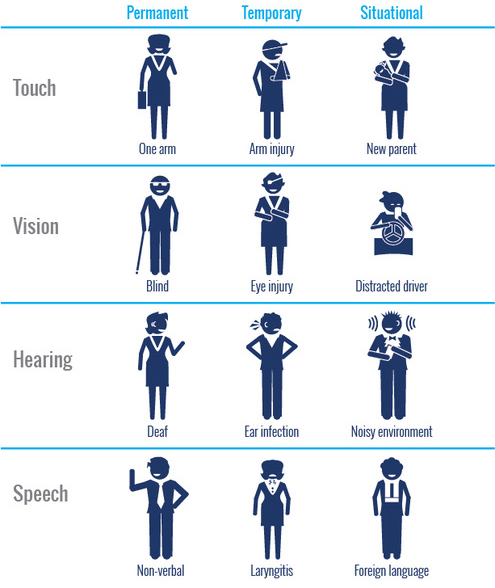Accessible Documents
When creating documents, there are a few basic steps to follow to ensure accessibility guidelines are followed. These basic steps apply to a variety of formats such as Microsoft Word and Adobe PDF.
- Use Headings
- Use Lists
- Add Alternate Text to Images
- Identify Document Language
- Use Tables Wisely
- Understand How to Export
USE HEADINGS
Headings and subheadings should be formatted using the style features provided in the authoring tool. Headings should form an outline of the page content (Heading Style 1 for the main heading, Heading Style 2 for the first level of sub-headings, Heading Style 3 for the next level of sub-headings, etc.). This enables screen reader technology to convey how content is organized to the user, and allows the user to quickly navigate to content of interest. Most screen readers provide users with the ability to move quickly between headings with a single key-stroke.
USE LISTS
Content that is organized as a list should be formatted using the list features provided in the authoring tool. Many authoring tools provide one or more style options for creating unordered lists (with bullets) and ordered lists (with numbers). When lists are formatted correctly, screen reader technology is able to convey how the content is organized to the user. Screen readers can inform users that they are entering list content, and how many items are in the list.
ADD ALTERNATE TEXT TO IMAGES
Images must include alternate text, commonly referred to as "alt text". The purpose of alt text is to communicate the content of an image to users who are unable to see images. Alt text should clearly and concisely communicate the content of the image. There is no limit to the number of characters for alt text, but a length of 70-125 characters is generally recommended. Screen reader technology typically notifies the user that an image is present and then reads the alt text. Many authoring tools provide features for adding alt text to images, usually located in the image properties menu.
If content includes images that are decorative or standard across multiple pages of content (like a header or footer), alt text is not required. Specific steps must be taken to hide such images so screen reader technology can skip over the images. These steps are unique to authoring tools and are explained in specific tutorials.
IDENTIFY DOCUMENT LANGUAGE
The language content is created in must be identified in the authoring tool. Screen reader technology is able to read content to users in a variety of languages. By identifying the appropriate language, content creators can ensure users hear the appropriate language for the document they are reading. If portions of content are in a different language the main language should be identified for the majority of the content, and the specific portions should be identified separately in the authoring tool.
USE TABLES WISELY
If content is organized using tables, clearly label the columns and rows and keep the table simple. If the table is complex consider presenting the content in separate simple tables with clear headings. Screen reader technology can have difficulty navigating content in tables, which makes appropriately styled heading labels for columns and rows of utmost importance. Tables should not be used to design the overall layout of content, such as creating columns. Authoring tools provide features more suited to this function than tables.
UNDERSTAND HOW TO EXPORT
Content is commonly exported as an Adobe PDF document. To meet accessibility standards, PDF documents must be tagged. These tags create a structure for screen reader technology to follow, and must be included for all elements of the content. Specific steps must be taken to create tagged PDF documents. These steps are unique to authoring tools and are explained in specific tutorials.
